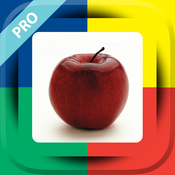Language Builder Picture Cards is a top-selling curriculum tool for autism. The developers behind  this tool also offer Language Builder, an app featuring six core autism educational activities. The app is professionally designed and used by therapists, teachers, and parents to teach basic language skills to children with autism, speech-language delay or special needs.
this tool also offer Language Builder, an app featuring six core autism educational activities. The app is professionally designed and used by therapists, teachers, and parents to teach basic language skills to children with autism, speech-language delay or special needs.
The developer, Stages Learning Materials, has been developing quality teaching tools since 1996.
We were one of the first companies to create products specifically designed to meet the unique needs of students with autism, and we have dedicated our lives to quality autism education.
We all know that learning happens in stages. Learn to crawl before you walk, learn to walk before you run. Language development also happens in stages. Children learn to match objects first (“put apple with apple”), then to identify objects receptively (“give me the apple”), and finally to identify objects expressively (“What is it? It is an apple.”)
The app’s activities are wholly customizable. You can customize speech or text commands, card positions, prompts and prompt fading, target and distractor words, reinforcers or more. It is available in a few versions: basic version (free), standard ($39.99), and pro version ($119.99). The basic app includes 90 Language Builder Basic Stage images, with 500+ words available for purchase by category, including:
- Animals
- Food
- Transportation
- Furniture
- Insects
- Everyday objects
- Seal life
- Musical instruments
- Tools
- Body parts
- and more!
The Pro version lets you upload your own images and customize labels, associated instructions and categories. For individuals working with several students, they are now able to create unlimited student accounts, with stored word lists, settings and reports.
Activities included in Language Builder Pro App:
- Similar matching: teaches individuals to match pictures which portray the same word, but with a different image.
- Identical matching: teaches students to match identical pictures of familiar objects.
- Receptive labeling: students hear a word spoken by the iPad, then touch one of the displayed pictures to show they recognize the word and can find the corresponding image.
- Expressive labeling: presents the image on the screen and asks: “What is this?” Therapists gauge response and deliver reinforcement to allow for shaping of pronunciation.
- Picture identification: allows individuals to scroll independently through images and hear a spoken word paired with each picture on the screen. This activity is a great reviewing activity of the images and their labels.
- Sorting: allows students to sort pictures into categories with like objects.
To learn more about Language Builder, check it out on iTunes!
